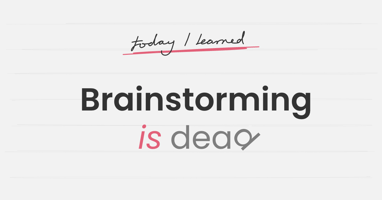One must consider resource implications when determining an optimal portfolio investment scenario. Insufficient resources available to deliver a given portfolio is the norm, so one must conduct a process to select a subset of the portfolio to be funded. A portfolio funding approach which selects the highest priority projects and applies funding, in prioritized order, until resources are exhausted is not necessarily optimal. Often times a collection of lower priority projects, each with lower resource requirements, funded in place of a higher priority project consuming a large number of resources, results in a plan that is more effective and more beneficial to an organization.
While companies would prefer to avoid including resources in the portfolio balancing exercise due to the complexity involved, there are approaches which minimize and in some cases eliminate the complexity. I will discuss some of these here.
Resource Planning versus Resource Management
The first thing to consider is planning versus management. Closely related to this is the accuracy of the resource numbers. Resource management is about defining and committing resources to actual work, and then tracking how those resources are actually being consumed. Resource planning is about estimation of needs, often in a fuzzy environment where details are not yet known. Consider how accurate you really need the values to be. For planning purposes, it might not be necessary to get an exact figure. Estimates might be good enough. It is often more important to quickly and easily get a statement of resource requirement rather than delay a portfolio re-balancing exercise until highly accurate figures (if such a thing actually exists) have been obtained. We have observed far too many companies spending too much time trying to get exact figures, either because they believe estimates are insufficient or because their culture is one that measures actuals too closely against initial planning numbers and views any difference as a measure of poor performance.
A better approach is to consider the quantification of resource requirements as an estimate only. Less important than the actual value is a consistent approach, with consistent methods and rules, toward calculating resource requirements across multiple initiatives. If desired, a degree of accuracy for each estimate can be stated so that you know which initiatives have the soundest resource estimates.
Do not try to manage actual resource fulfillment based these numbers. Consider planning-oriented resource definitions as a general statement of size, and a statement of resource intent. Save these generated statements of intent so you can compare them at a later date to the more detailed resource-management oriented allocations that occur at a later date and thereby learn how good your planning assumptions are. By doing this, you can improve the accuracy of the resource planning rules and methods over the long term.
Top-down versus Bottom-up
Many companies attempt bottom up resource planning and resource management. While feasible, it is hard to do, requiring a great deal of effort and discipline. The reward for the effort required to do bottom-up is not sufficient for portfolio planning purposes, and is even perhaps insufficient for actual operational purposes. Be very conscious of the return on the investment required to achieve greater levels of resource definition.
Top-down is about stating resource intent, without worrying about exactly which resources will eventually do the work. Top down can be as simple as “we need 100 people on this project”. Any further refinement of such a statement moves towards bottom-up and mean increased effort to identify and specify. Here are some examples of increasingly more detailed resource planning assumptions, moving from top-down toward bottom-up:
- We need 100 people on this project
- We need 50 people this year, and 50 people next year on this project
- We need 70 engineers, 20 quality assurance people, 5 team leaders, two project managers, and three marketing people
- We need 25 chemical engineers, 25 material scientists, 20 manufacturing engineers, 20 quality assurance people, 5 team leaders, two project managers, and three marketing people
- We need 10 engineers this month, 20 next month, 25 next month….
- We need 20 junior chemical engineers, 5 senior chemical engineers….
- We need Bob next week, Mary for the next six months full time, James in November, Danny ….
Notice how the amount of detail increases as you move downward. The amount of effort required to both determine the statement of resource as well as to key it into a planning system also increases, sometimes substantially.
Many companies are successful at planning at the highest levels, and producing alternative portfolio investment scenarios rapidly that can quickly be compared and evaluated for merit. This lean approach increases speed, and the loss of accuracy is not proving to be a problem for most companies who are doing it. In fact, many would argue that the most detailed of bottom-up estimates is equally likely to be as incorrect as any of the top level estimates.
The Big Rock Approach
Peter Loerincs once phrased resource planning as filling a bucket. Begin by placing the big rocks into the bucket. Then place the smaller rocks where they fit. Then add the sand. This scenario is exactly what effective resource planning does. The big rocks are the larger projects that you know have to be done. These projects will have gaps where you can fit smaller projects. After that, there will be smaller gaps where yet smaller projects will fit.
Waterline versus Blow It Up Scenarios
Continuing on the big-rock approach, you will find that there comes a point where the initiatives you have selected meet the capacity. This is known as the waterline. The most interesting part of resource planning happens at the waterline. Big projects below the waterline will never fit into the available resource capacity. But smaller projects just might with minor adjustments to resource considerations or timing. Walk the waterline, seeking to shift or replace initiatives from what is funded and what is not. Generate alternate scenarios and make comparisons. Alternatives at the resource waterline can have significant impact to the overall value of a portfolio.
Once you have focused on the waterline, try some “blow it up” scenarios. Take out an initiative with a large resource requirement (a big rock) and see what happens. Look for entirely different scenarios where the largest initiatives are different and observe how the value of the portfolio changes. This radical approach might surprise you.
We have discussed several aspects of dealing with resources in innovation. In the end, you must determine what works best for your company. But the greatest advice we can give you is to keep things as simple as possible.





